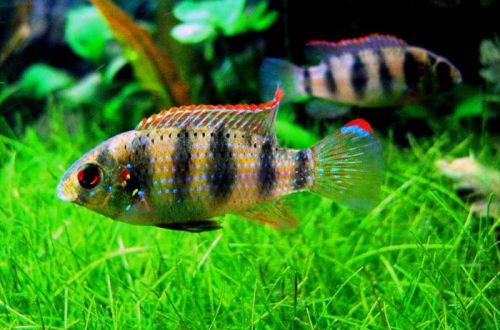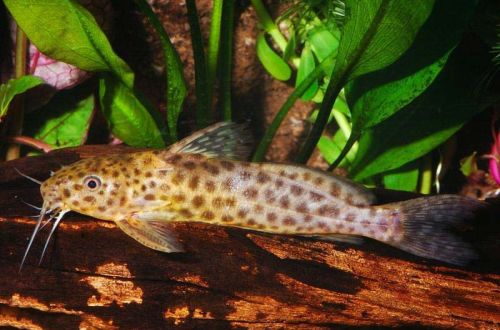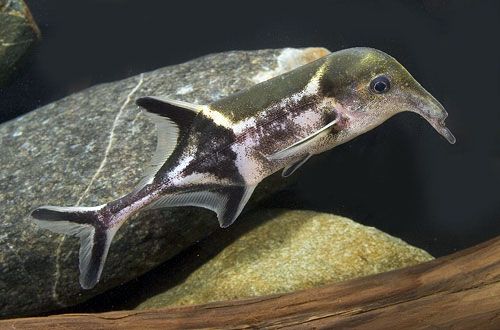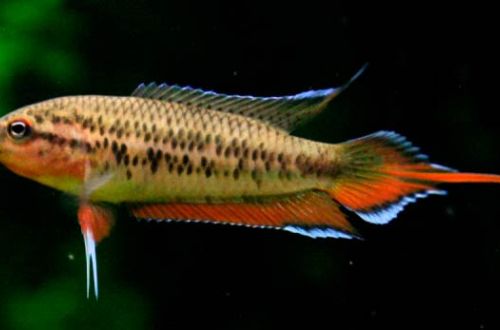
Anomalochromis Thomas
Anomalochromis Thomas, scientific name Anomalochromis thomasi, belongs to the Cichlidae family. Easy to keep, not whimsical fish with bright colors. Compatible with many other freshwater species. This set of qualities makes them an excellent choice for the beginner aquarist.

Contents
Habitat
Occurs from the equatorial part of Africa from the territory of modern Sierra Leone, Guinea and Liberia. It lives in numerous streams and rivers flowing under the canopy of the tropical forest. The habitat is characterized by an abundance of plant residues in the water (leaves, fruits, snags), from which the water is saturated with tannins and acquires a tea shade.
Brief information:
- The volume of the aquarium – from 80 liters.
- Temperature – 23-27°C
- Value pH — 5.5–7.5
- Water hardness – soft to medium hard (1-15 dGH)
- Substrate type – sand or fine gravel
- Lighting – moderate
- Brackish water – no
- Water movement – weak, moderate
- The size of the fish is about 8 cm.
- Food – any kind of food
- Temperament – peaceful
- Content alone or in a group
Description

Adults reach a length of 7–8 cm. Males are somewhat larger and brighter. The coloration is gray with rows of vertical black strokes. Throughout the body there are bluish specks. The fins and tail have a red border. It is worth noting that young fish look dull (they are most often on sale), and all their colors show only in adulthood.
Food
Undemanding to the diet. The fish will become all kinds of popular feed. For example, a daily diet may consist of dry flakes/granules combined with bloodworms, brine shrimp, live or frozen. It is permissible to serve only dry food, but of high quality and from well-known manufacturers.
Maintenance and care, arrangement of the aquarium
The optimal size of the aquarium for a small group of fish starts from 80 liters. The design uses sand or fine gravel with a few flat stones that will act as a spawning ground. As well as many hiding places, such as driftwood or various decorative items. You can even use ceramic pots on their side or hollow PVC tubes. The decor is selected based on the preferences of the aquarist. Plants are not required.
Maintaining stable water conditions with suitable pH and dGH values is essential to the success of Anomalochromis Thomas. A productive filtration system and weekly replacement of part of the water (15–20% of the volume) with fresh water will help maintain its quality at an acceptable level. To bring the water conditions in the aquarium closer to natural conditions, you can use Indian almond leaves. As they decompose, they release tannins and turn the water brownish. Alternatively, oak leaves, previously dried and then soaked, are suitable, thanks to this procedure they will sink and not interfere with the surface.
Behavior and Compatibility
Peaceful, shy fish, but become territorial during the spawning season. However, even at this time they do not pose a threat to other species. Keeping in a group, it is permissible to combine with other African non-aggressive fish of a comparable size.
Breeding / breeding
Breeding Anomalochromis Thomas is simple and will not cause much trouble. Unlike other African fish, they are able to breed in a fairly wide range of pH and dGH, so fry can appear in the general aquarium. This species is monogamous, the male and female choose each other from among relatives and keep the pair for a long time. Pairing is most likely if a group of fish have been growing together since they were young.
With the onset of the mating season, the couple occupies a certain place at the bottom of the aquarium (forming a temporary territory) and begins to protect it. A flat stone or a low-lying wide leaf of plants acts as a spawning ground. Fish clean it from organic debris, plaque. The female lays up to 500 eggs. The incubation period lasts about 48 hours. At this time, the female is near the masonry, and the male guards the border of his territory. They also manage to make several holes in the ground, in which fry will be in turn after they appear. Care for the offspring lasts no more than a month, after which the fry become left to themselves.
Fish diseases
The main cause of most diseases is unsuitable living conditions and poor-quality food. If the first symptoms are detected, you should check the water parameters and the presence of high concentrations of hazardous substances (ammonia, nitrites, nitrates, etc.), if necessary, bring the indicators back to normal and only then proceed with treatment. Read more about symptoms and treatments in the Aquarium Fish Diseases section.





